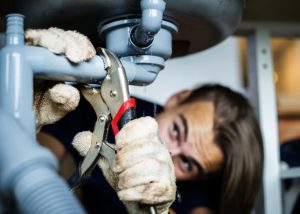Just how to Discover and Repair Water Leaks-- A Comprehensive Overview
Just how to Discover and Repair Water Leaks-- A Comprehensive Overview
Blog Article
The publisher is making a number of good annotation regarding Leaking water lines as a whole in this content underneath.

Early detection of dripping water lines can mitigate a prospective calamity. Some little water leaks might not be visible.
1. Analyze the Water Meter
Every house has a water meter. Inspecting it is a surefire manner in which helps you uncover leakages. For starters, switch off all the water sources. Ensure no one will certainly purge, utilize the tap, shower, run the washing maker or dishwasher. From there, go to the meter as well as watch if it will change. Because no person is using it, there should be no motions. That suggests a fast-moving leakage if it moves. If you discover no adjustments, wait an hour or two as well as examine back once more. This suggests you may have a sluggish leak that might even be below ground.
2. Examine Water Consumption
If you identify unexpected modifications, in spite of your consumption being the same, it means that you have leaks in your plumbing system. A sudden spike in your costs shows a fast-moving leakage.
A constant boost every month, even with the very same behaviors, shows you have a slow leakage that's likewise slowly rising. Call a plumber to extensively inspect your home, especially if you really feel a warm location on your floor with piping underneath.
3. Do a Food Coloring Test
When it comes to water intake, 30% comes from bathrooms. If the color in some way infiltrates your dish during that time without flushing, there's a leakage between the container and also bowl.
4. Asses Outside Lines
Don't fail to remember to inspect your exterior water lines also. Needs to water seep out of the connection, you have a loose rubber gasket. One tiny leak can lose tons of water and spike your water bill.
5. Examine and Analyze the Situation
House owners must make it a behavior to examine under the sink counters and also also inside cupboards for any type of bad odor or mold and mildew growth. These 2 warnings show a leakage so punctual interest is needed. Doing routine assessments, even bi-annually, can save you from a major trouble.
If you recognize your residence is already old, keep a watchful eye on your heating systems, pipes, pipes etc. Check for discolorations and also damaging as a lot of pipes and devices have a life span. They will also normally degrade due to tear and put on. If you believe leaking water lines in your plumbing system, do not wait on it to escalate. Call an expert plumber immediately so you do not end up with a dreadful mess in your home.
Early detection of dripping water lines can alleviate a prospective disaster. Some small water leakages may not be noticeable. Inspecting it is a proven way that aids you discover leaks. One little leak can lose loads of water and also spike your water expense.
If you believe leaking water lines in your plumbing system, do not wait for it to escalate.
WARNING SIGNS OF WATER LEAKAGE BEHIND THE WALL
PERSISTENT MUSTY ODORS
As water slowly drips from a leaky pipe inside the wall, flooring and sheetrock stay damp and develop an odor similar to wet cardboard. It generates a musty smell that can help you find hidden leaks.
MOLD IN UNUSUAL AREAS
Mold usually grows in wet areas like kitchens, baths and laundry rooms. If you spot the stuff on walls or baseboards in other rooms of the house, it’s a good indicator of undetected water leaks.
STAINS THAT GROW
When mold thrives around a leaky pipe, it sometimes takes hold on the inside surface of the affected wall. A growing stain on otherwise clean sheetrock is often your sign of a hidden plumbing problem.
PEELING OR BUBBLING WALLPAPER / PAINT
This clue is easy to miss in rooms that don’t get much use. When you see wallpaper separating along seams or paint bubbling or flaking off the wall, blame sheetrock that stays wet because of an undetected leak.
BUCKLED CEILINGS AND STAINED FLOORS
If ceilings or floors in bathrooms, kitchens or laundry areas develop structural problems, don’t rule out constant damp inside the walls. Wet sheetrock can affect adjacent framing, flooring and ceilings.
https://www.servicemasterbyzaba.com/blog/how-to-detect-water-leakage-in-walls/

We were guided to that write-up about Top leak detection hacks through an acquaintance on a different web property. Sharing is good. Who knows, you may just be helping someone out. I praise you for your time. Don't hesitate to stop by our blog back soon.
Report this page